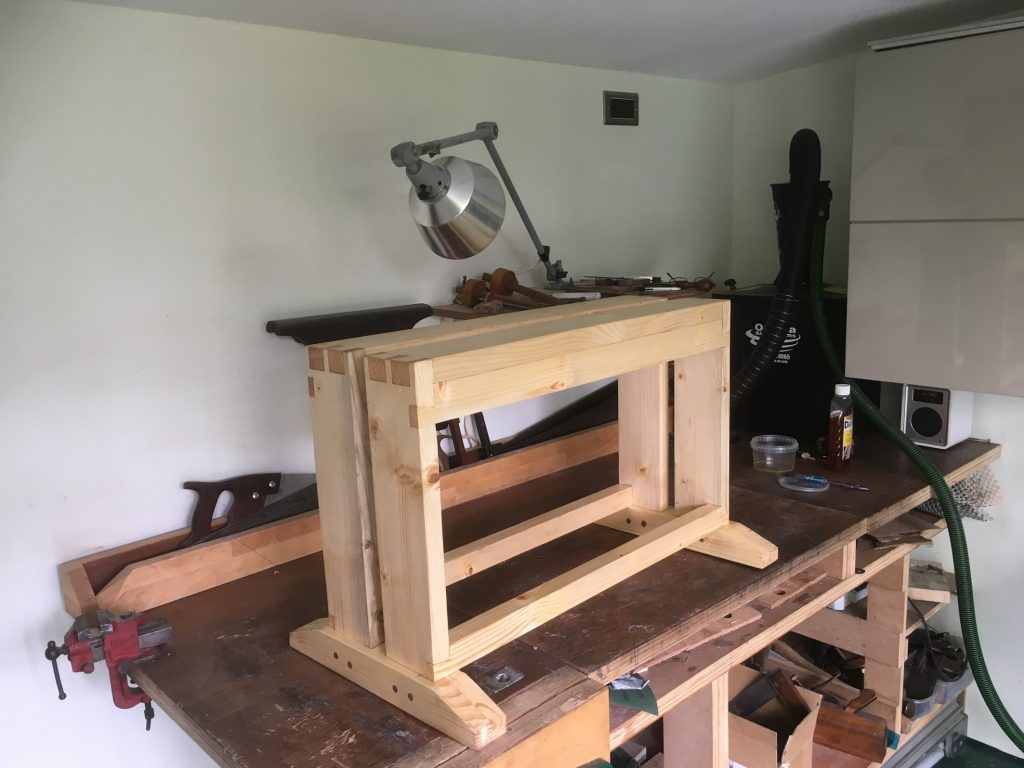I prepared the wood needed for the workbench legs – the fence posts were very ropey, and this contributed to my first major cock up. I am gradually getting more confident using a plane to get a board square and straight and this part went okay. Richard Maquire is good at explaining which surfaces need to be accurately done, and why some can be left in their rough sawn state, which helped save a bit of time.
All the joinery is half lap dovetail joints, which are quick to do particularly if you use a chisel to whack out most of the waste – this is much more fun than sawing, but as I found out you have to be careful looking for knots and defects in the wood that might cause it to split outside your lines .
My inexperience showed itself early on where – despite having noticed one of the fence posts contained a large fissure – it did not occur to me that this would be immediately split the moment I hit it with a chisel. With hindsight this could have been easily avoided by orienting the post to avoid the crack – you live and learn! Sadly I did not have enough fence post left to make a new one, so I glued the broken bit back on (luckily the majority of the broken part will be removed again when I cut the recess for the apron).
The legs are kept square by four rails ( wider rails under the top and two narrower rails near the feet) – I used a bit of the 1 3/4” timber purchased for the top to make the top rails and an old scaffold board to make the bottom rails.
I got to use my saw bench to rip the scaffold board into two 4” strips and the split in the top was very handy.




All bar one of the joints can be best described as mediocre – reasonably tight fits but no where near the level of precision as Mr Maquire. Still they are the best I could do. All the small inaccuracies are not really going to effect the end result I think – as Maguire is keen to remind us, it is only a workbench after all.
The only problematic error was a bit of careless sawing on the mortice for the diagonal brace going between the leg and the apron (this is an optional feature to reduce the amount the bench “racks” when planing). Annoyingly this bit is intended to make the bench more rigid so presumably it is not a good idea to have a loose fit here – I created a small shim to fill the gap and hopefully this will keep it rigid.
